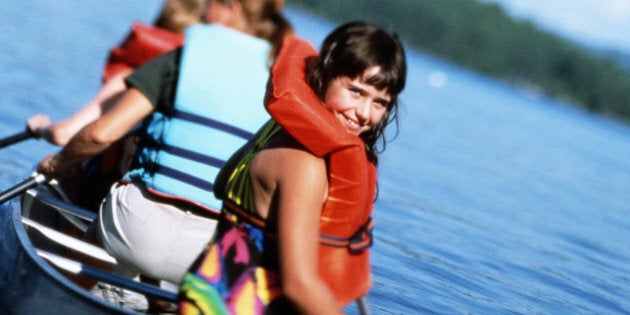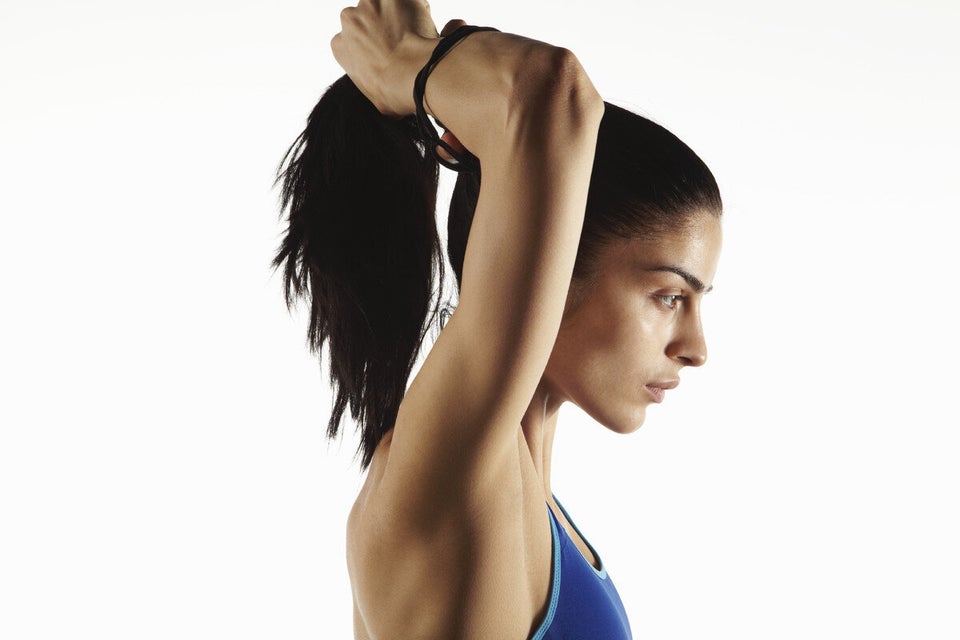
Summer is almost officially here -- the weather is finally warmer, school is almost out and most of us are gearing up for a season full of fun activities. Yet summer is also the season where accidents, particularly in children, are more frequent. Many of these accidents can be prevented and a number of pediatric advocacy groups and children's hospitals have created information around prevention strategies. I have summarized seven opportunities below to help ensure a safe and kid-friendly summer.
1. Prepare for Pools, Lakes, and Oceans
Summer pool parties, lake swimming at a cottage and vacations on the ocean are opportune times to review water safety. Drowning, or "submersion injury" is one of the most common causes of death in children under the age of five.
The most effective strategy to prevent a submersion injury is to ensure that pools are surrounded on all four sides with self-locking, self-closing gates at least four-feet high. Children should be supervised near bodies of water -- this includes a bathtub -- with experts recommending one adult per infant and one adult per two young children. Children with medical conditions such as a seizure disorder or heart condition are particularly at risk. A life jacket or personal flotation device can be used when swimming and is a must for boating -- note that only a life jacket ensures that a child floats on his or her back.
2. Sunshine Safety
Sun safety is crucial, for all skin types. It's best to avoid full exposure to the sun between peak hours of 10 a.m. to 4 p.m., and try to choose long sleeves and a hat with a wide brim; these provide a physical barrier against the sun's harmful rays. Inspect new moles that have appeared or changed in size and color, and review and changes with your doctor. Ensure a broad-spectrum (UVA and UVB) sunscreen with an SPF 15 to 50 is applied liberally at least 15 minutes prior to sun exposure, reapplying often, particularly with sweating or during sporting activities.
When applying sunscreen, aim for an even layer. Lotions with titanium oxide or zinc oxide act like a physical barrier and are not absorbed by the skin, as opposed to oxybenzone or avobenzone which may be absorbed and act as chemical barriers. There is insufficient evidence to recommend for or against the chemical barriers, but ongoing research is evaluating whether the level of absorption is clinically significant.
3. Severe Allergies
It's the season for travel so often new foods are introduced this season. Always carry around an epinephrine auto-injector prescribed for your child if they have a severe allergy, and review the technique with your physician. Ensure anyone caring for your child with a severe allergy is familiar with the technique. Since summer is also the season for travelling to new environments, keep track of any new food intolerances or rashes and bring them to your doctor when you return home.
4. Enjoy a Bug Life
All kinds of bugs -- from stinging insects like wasps, to biting insects like mosquitoes, wreak havoc in the summer. Pay particular attention if your child has an allergy to stings from wasps or bees -- an epinephrine auto-injector is important carry at all times if this is the case.
For mosquito and flea protection for children over six months old, it is best to choose bug spray with between 10 to 30 per cent Deet, which has an excellent safety profile, avoiding the mouth or eye area. Commercial or homemade essential oil formulations such as eucalyptus or citronella(dissolved in water) may be helpful as well but have not been directly compared to Deet for efficacy and may cause a contact-type hypersensitivity reaction. They also tend to last under two hours.
Bites can be handled with cold compresses, aloe, or an over the counter bug bite treatment. Any unusual rashes or lesions (for example target-like rashes) should be looked at by your doctor. Lyme disease often presents in this way and is transmitted by ticks found in the northeastern U.S. but have been seen in various parts of Canada as well.
5. Those Pesky Plants
Hiking and camping in the summer can expose all of us to poisonous plants. In parts of Canada, jimson weed can attract curious children and adults alike, and if ingested, can be deadly. Other plants such as poison ivy can result in a contact dermatitis reaction. A number of wild mushrooms should be avoided due to their harmful effects. Supervise children closely while hiking and camping, and remind teenagers to refrain from experimenting with peculiar plants. The Ontario Poison Control Centre has compiled a great list of plants to review. Ensure that you have access to your local poison control centre and have their phone number handy If you think your child may have ingested something, call poison control and take them to the nearest emergency department.
6.Take a (Car)seat!
Summer often means road trips with friends and extended family. Make sure that the vehicle used has room for an appropriate numbers of carseats. The recommendations are for 10kg (22 lbs) and under one-years-old to use a rear-facing seat. From 11 kg to 18 kg (up to 40 lbs) a forward-facing carseat can be used (if the child is over 12 months). Once children are over 40 lbs there are options to use a larger carseat or move to booster seat. The general rule for conventional seating is that the child reach 36 kg (80 lbs). All children under 13 should sit in the rear of the car. Further details on how to ensure appropriate carseat and seatbelt use for different weight categories can be found here.
7. Heads up for Helmets
Bike riding can be a great way to encourage physical activity, but helmets should always be used. The helmet should be snug, secure and appropriate for the age of the child. There should be no cracks or chips in the helmet and it should be certified by the Canadian Standards Association. A great video on helmet fit for children can be found here.
Summer officially starts next week! Hopefully attention to these 7 opportunities to review safety will help ensure a fun and safe summer for you and the children you care for.
MORE ON HUFFPOST:
